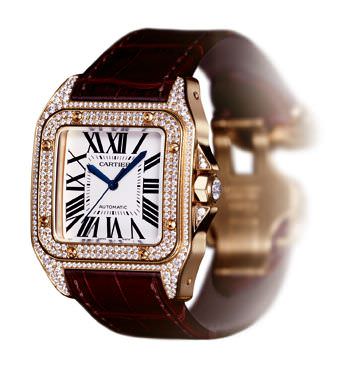If glamour and luxury means high end watches, then both are alive and well in the USA. Sales of high end, expensive watches are strong and getting stronger.
The Luxury Market
According to Greg Furman, the founder of the Luxury Marketing Council (www.luxurycouncil.com), it is estimated that the luxury market is a $400 billion market growing at 15% a year, predicted to hit $1 trillion by 2010. “The luxury market in the US is the most robust it has ever been,” he says. “At the same time, it's one of the most challenging for traditional luxury brands who have relied on the brand to build their business. The high end customer now has the time to learn more about the best of the best and to pay for it. Companies have to educate people about why it makes sense to pay more for their high quality goods. In the last three or four years, the consumers have made their money and they want to know what constitutes the best of the best. There is a rise of connoisseurship and the need to know. The consumer's need to know and the educational attempts of the brands are meeting.
”This provides amazing opportunities for the smartest luxury marketers,“he continues.”They have to roll up their sleeves and do very intelligent and very customized marketing. They have to rethink the way in which they are spending their money to reach the very best customer (2.7 million households with liquid portfolios of $1 million or more) – things like loyalty programs, customer service initiatives, e-commerce (Nieman Marcus has built their e-business up to $250 million) and more. People are putting a lot of money into very exclusive events for small, elite groups. They gather data and they have leads that are actionable and they are educating the customer in a non-condescending way. It seems like an excessive investment but the buzz in the community is at least as good as traditional income and the conversion from lead to buy is phenomenal, as much as 30 percent."

SANTOS 100 by Cartier
‘Microstige’ Trend
Customers at the higher end of the market are increasingly turning to old world quality, which is good news for the watch industry.
“We've identified an emerging trend, which is a return to old traditional European standards, defining luxury more by the craftsmanship of the product and the story and the authenticity of the product, rather than by the brand name or the price point,” explains Amy Nicolo, VP of corporate development, D'Arcy Laboratories. “I think it's a backlash to the mass production that's been happening in every industry. The consumers want to feel like they are buying into the story of the brand. Luxury customers are embracing artisan quality goods – the cost is higher and the luxury consumer is more open to buying something for the soul, rather than a mass produced item that anyone on the street can buy.”
There is no doubt that people are spending money on luxury goods, watches included. “The trend is turning towards high end luxury goods, finer materials,” says Patricia McLemore, owner, Elan, a company which caters to high end clients. “People are looking for old world looks and old world feel.”
The Future
The outlook for luxury watches is very bright. The market is so under penetrated, only a very small percentage of people who can afford a luxury watch actually own one, so the potential is absolutely incredible.
“Clearly, people are seeing the need to buy luxury goods,” says Linda Passaro, General Manager, Longines USA. “In the watch industry, we don't do the best job about convincing people that they have to purchase a fine watch for various occasions. There's clearly a lot of opportunity for the industry, because there is room to grow.”
Education is the key – people who understand luxury and glamour are those who have been taught to do so.
“We still have a long way to go,” says Ron Jackson, president, Girard-Perregaux/JeanRichard NA. “We've made strides in the last ten years, there are more celebrities and glamorous people who understand fine watches now, but there is still a lot of room to grow.”





